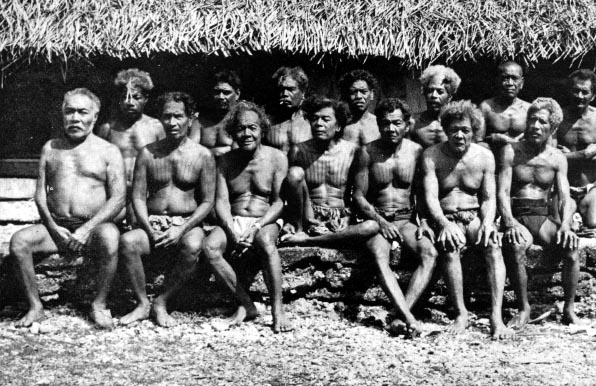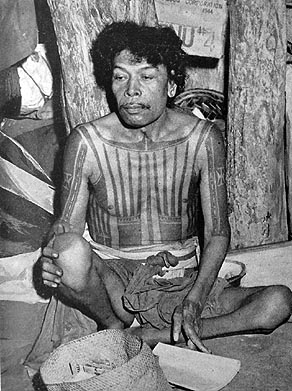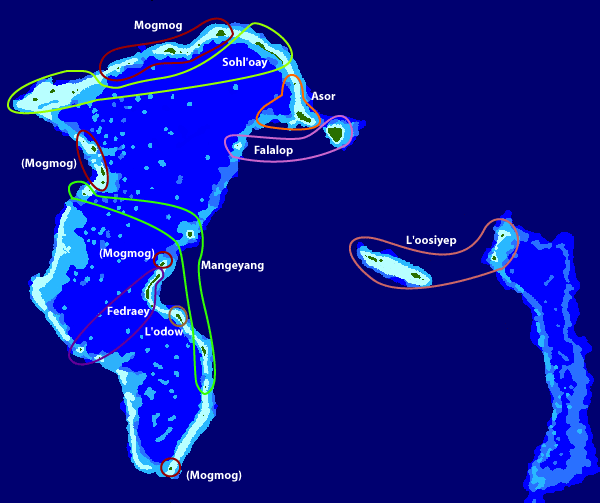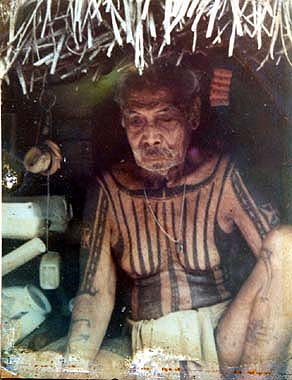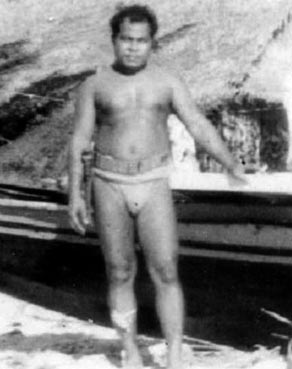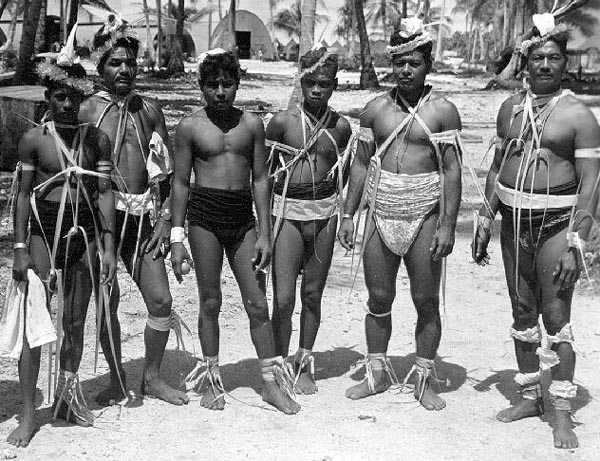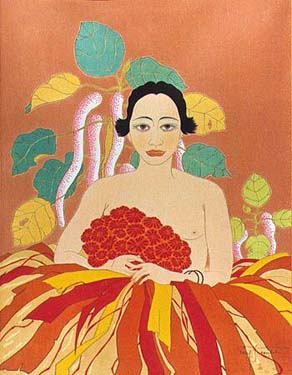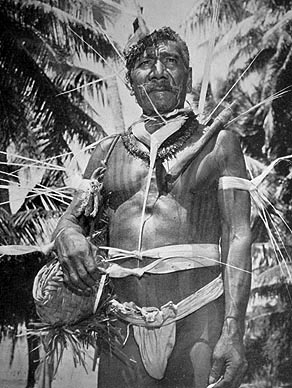 |
 |
 |
|||||
|
|
|
|
|
|
|
|
|
|
|
|||||||
"Ulithi’s governing system is a part of the larger political system that involves all of the islands and atolls in Yap District," explains Josede Figirliyong. "The other inhabited islands and atolls have chiefs who are responsible for their people. While each island or atoll had its own chiefs and council, they all traditionally acknowledge that the inhabitants of Ulithi Atoll were politically higher, and all were obligated to pay tribute to the paramount chief on Mogmog Island in Ulithi. The paramount chief would then send part of this tribute to the Chiefs of Gagil District on Yap Island, in the name of the Outer Islanders."
|
||
|
|
||
“Ulithi Atoll is divided into eight districts, named after the leading island of that district. Mogmog District ranks highest, with Sohl'oay District and Mangeyang District second in this chain of command. The districts of Asor, L'odow, Fedraey, Falalap, and L'oosiyep, equally share the third and last level of authority. For example, if someone broke the turtle tabu by killing a turtle on Falalap Island, the paramount chief would order the Mogmog district chief to punish the offender. This chief would send a message to the chief of Soholoi district instructing him to carry out the punishment. “The Political System is based on a hierarchy of inherited chieftainship. The paramount chief is on the island of Mogmog, and below him are lower-ranking chiefs, plus ranking lineage groups of mtaang and raat."
|
|
|
|
“The succession to any of these positions is matrilineal. The paramount chief comes from the Mogmog lineage of Lamathag. He can be chosen from only this, and is usually the oldest male of the lineage. Traditionally, age was not the only determining factor, but his ability to be a sane and a responsible leader were also considered by the older male members of the Lamathag lineage before they declared a successor to the position. "Once these men had reached a decision, the news would be carried down the chain of command by the raat. All of the district chiefs of Ulithi Atoll would then journey to Mogmog Island to attend the installation ceremony of the new paramount chief." “The ceremony was held in front of the Rool’oang Men’s House. A circle was made by all of the Ulithi Atoll chiefs. Within the circle sat the man who was to become the paramount chief, the chief of Sohl’oay District and the chief of Mangeyang District. By previous arrangement either the chief of Sohl’oay or of Mangeyang would wrap a machi, a lava-lava woven with a specific pattern, around the shoulders of the new paramount chief. This chief would then pray to the High Spirit in the Sky."
|
|
|
|
|
"The prayer usually goes something like this," Mariano adds:"King of the universe, look down upon this man: if you find him to be a good man, let him live forever. King from the Underworld, look upon this man: you find him to be evil, you take him right now." "When the prayer was finished," Josede continues, "the machi was given to the new paramount chief. He would then send this machi to the paramount chief of Gagil District in Yap." “After the installation ceremony the new paramount chief was subject to certain rules of tabus for various lengths of time. For the rest of his life, he could not eat with anyone except navigators and shamans. Also, no one was allowed to touch or to use his eating and cooking utensils except the navigators, the shamans, and the woman who was chosen to cook for him. There were other tabus, but these are either not remembered or no longer observed."
|
||
|
|
||
“The paramount chief is the overall ruler of all the islands in Yap District except Yap island itself. Although he holds this authority, the paramount chief seldom if ever becomes involved in the decisions of the inhabitants of the Outer Islands and of Ulithi Atoll except for the decisions made in his own district of Mogmog. He would only actively participate in matters of grave importance such as if an Outer Island chief or an Ulithian chief might try to secede from the existing political structure. “The paramount chief also metes out punishments to any district in Ulithi Atoll that breaks any important tabu such as killing turtles or eating dolphins and whales without first bringing them to Mogmog Island. He has the power to ban either the individual offender or the whole offending island from the use of the ocean in any form including fishing, bathing, cooking, and sailing when these tabus were broken."
|
|
|
“The paramount chief also handles all dealings with the district chiefs of Gagil and with all outsiders. He would pass on through his mtaang and raat to all the Ulithian and Outer Islands chiefs any requests from the Gagil chiefs as well as any of his own. Traditionally, the paramount chief also served as the intermediary between the High Spirit and the people. As such he would communicate with the High Spirit to gain knowledge of the future. But this role is no longer performed today. “There are district chiefs or tamol for each of the eight districts in Ulithi Atoll. Each tamol is chosen from a specific lineage in each district. The oldest, capable male member whose mother was of that lineage usually assumes the position of tamol. The tamol from Mogmog District is the highest of the eight and he is the intermediary between the paramount chief and the other district chiefs."
|
|
|
|
|
“The tamol presides over the Elders Council in his district except in Mogmog district where the paramount chief is chairman. These councils were made up of the oldest capable man from each lineage in that district. The Elders Council made all decisions concerning the community activities in their district such as fishing for the general public, repairing the canoe houses, the men’s house and the women’s house. This Elders Council met at the matalfal or men’s house on the leading island in each district. “Only remnants of the Elders Councils continue to function today. They now include all the young men and they no longer meet every morning as in times past. Instead, the infrequent sessions are announced among the men the day before the meeting. Community activities are still the topics of discussion." “When events occur that necessitate a general meeting of all the district chiefs, the paramount chief would request the Mogmog tamol to summon the other seven chiefs. The Mogmog tamol would spread the word via the mtaang from Mogmog to the seven chiefs who would then sail to Mogmog island for the meeting."
|
||
|
|
||
“Women also play a role in the political systems of their district. Their meetings are held in the women’s house and attended by all the women. Usually the oldest female of the district chief’s lineage assumes the leadership of the group. "Acting as a group, the women can influence the decisions of their district chief on matters that pertained to their district by simultaneously making known their request and presenting gifts. Their requests might be concerned with the drinking habits of the men, or the giving away of fish. The women’s group also punishes any woman from another district who has caused trouble in their district. “The women’s group from all the districts had the responsibility of weaving the pandanus mats and the lava-lavas that were presented to the paramount chief by their district chief. The Mogmog women’s group also performed this same duty for the paramount chief."
|
|
|
“Today the installation ceremony for the paramount chief is no longer practiced. The machi is no longer worn by any chief. However, they are still woven and are used in the burial of a chief to symbolize his position. "The paramount chief’s status as paramount chief of all the Outer Islands, not only Ulithi, is even more evident now than traditionally because of the new political choices and policies available to the people. "For instance, when the islanders of Satawal, 500 miles east of Ulithi, sought to secede from Yap District and to join Truk District, the paramount chief of Ulithi informed them that this was impossible because Satawal land is considered traditionally to belong to Ulithi. Thus, the paramount chief plays a much more active role in the affairs of all the districts of Ulithi Atoll and the Outer Islands." “The Mogmog District tamol continues to hold the highest position among the district chiefs. Besides his traditional duties the present Mogmog tamol has assumed a position of greater responsibility and influence within the whole political structure of the Outer Islands, Ulithi Atoll, and Yap. As chairman of the Outer Islands Council of Chiefs, the Mogmog District Chief attends and participates in various meetings and functions of the Government. The other district chiefs also attend all sessions of the Outer Island Chief Council.
|
|
|
|
"As a result of the Council," Josede concludes, "a district chief is no longer concerned only in the well-being of his district. Now his attention has been broadened to include the welfare of the Outer Islands and the other districts of Ulithi Atoll.”
|
||
|
|
||
|
|
|
|
|
|

|
| Ulithi Home | Map Library | Site Map | Pacific Worlds Home |
|
|
|
|

|
|
|
||
|
Copyright 2003 Pacific Worlds & Associates • Usage Policy • Webmaster |
